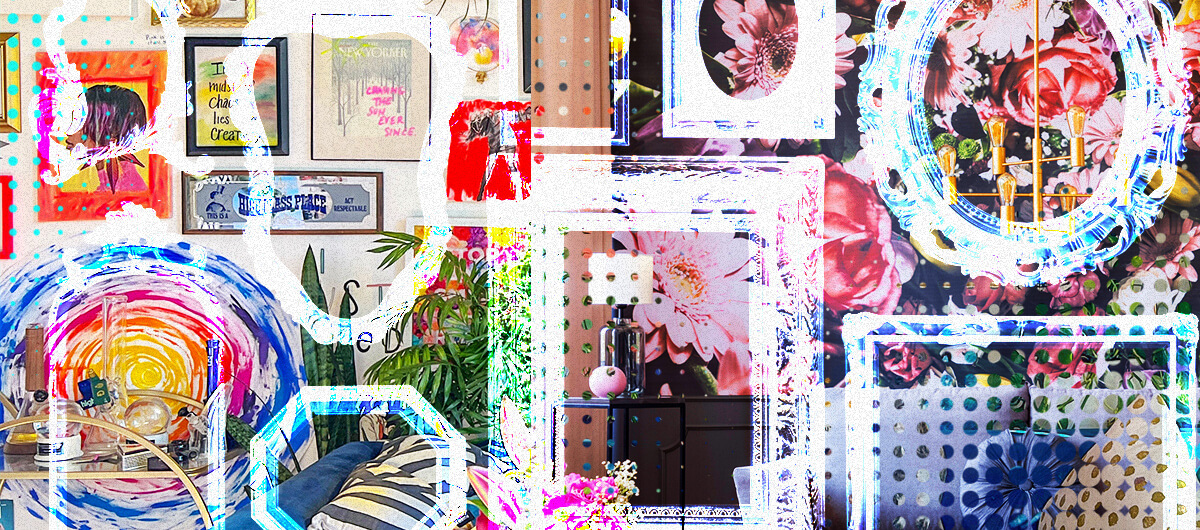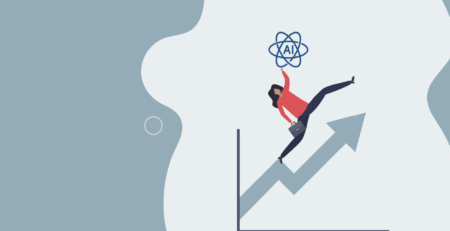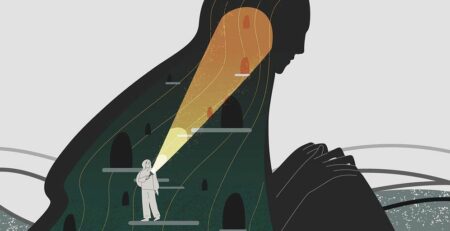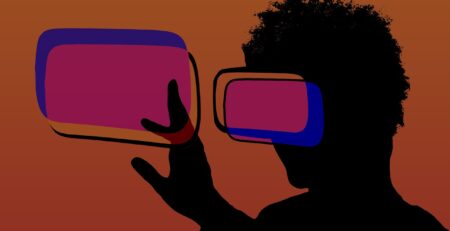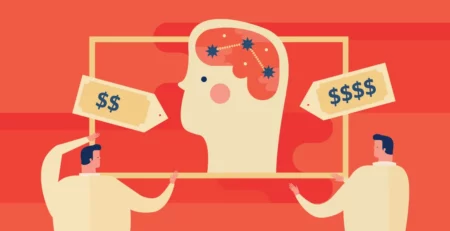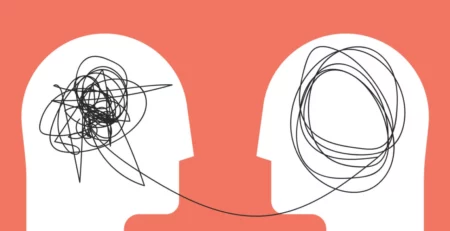In the 2000s, a wave of minimalist aesthetics swept through the design world. It influenced everything from architecture to fashion. This era celebrated simplicity, clean lines, and a “less is more” approach, stripping away excess to focus on the essentials. A prime example of this trend is the once-viral home of Kim Kardashian and Ye, designed with a stark, almost monastic minimalism. Their residence, with its white walls, sparse furniture, and open spaces, epitomized the minimalist ideal.
The allure of minimalism during this period was undeniable. It created a sense of calm and order in a rapidly changing world, resonating with people seeking refuge from the clutter and chaos of everyday life. But it equally began to represent sterility and conformity.
Design trends are cyclical, and as we move further into the 21st century, we see a resurgence of maximalist design. This has created a vibrant and expressive counter-movement that reflects deeper societal shifts.
Table of Contents
A Brief History of Design Fluctuations and Social Representations
Design trends have always fluctuated. They mirror the changing tides of society, culture, and politics. In the early 20th century, Art Deco rose in popularity. It was characterized by bold geometric patterns, rich colors, and lavish ornamentation. This style reflected the exuberance and optimism of the post-World War I era and the rapid technological advancements of the time.
The mid-century modern movement of the 1950s and 1960s marked a shift towards simplicity and functionality. Influenced by the Bauhaus and Scandinavian design, this era embraced clean lines, organic forms, and a focus on usability. The post-World War II economic boom and the rise of mass production made these designs accessible to the broader public.
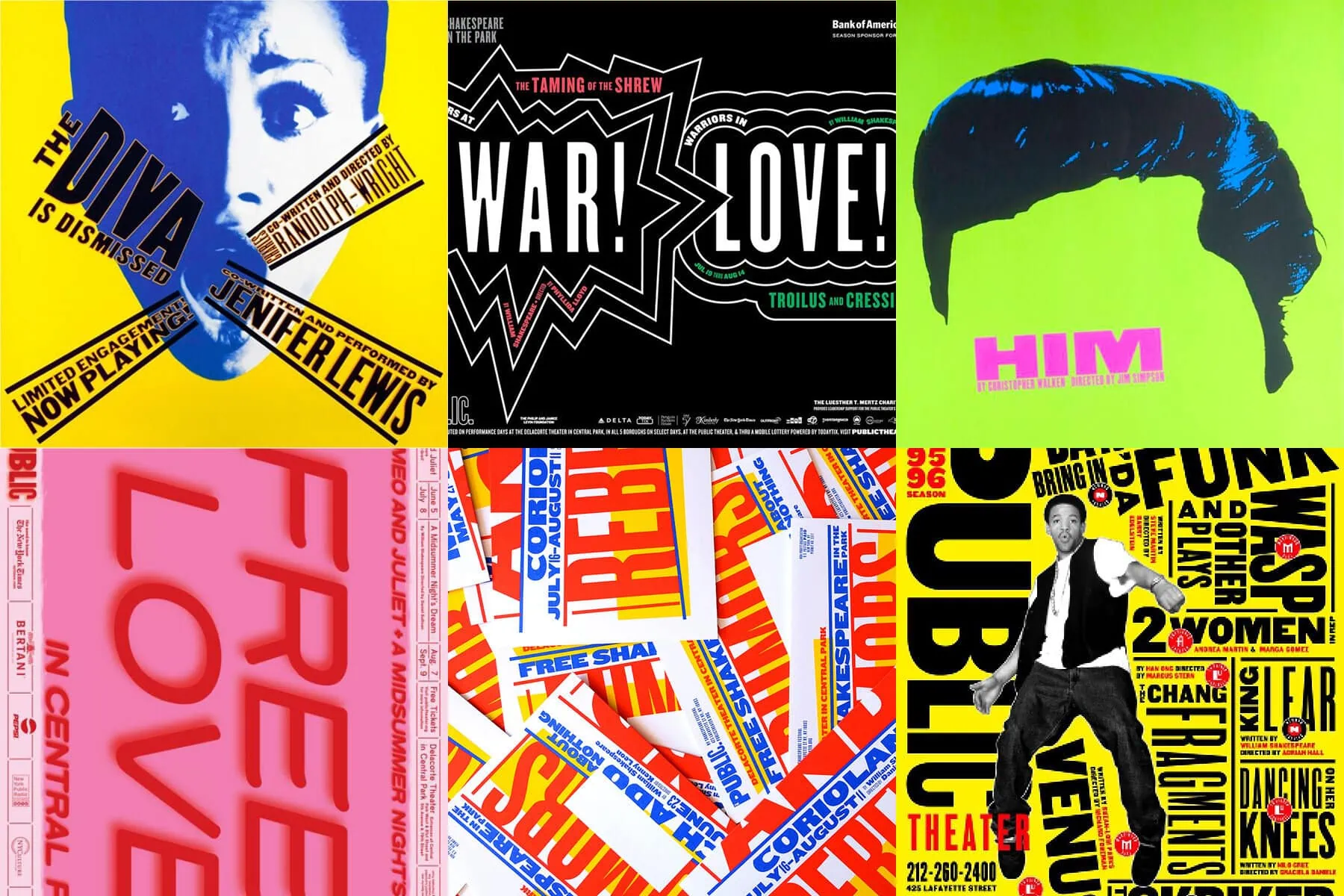
In contrast, the 1970s and 1980s saw a resurgence of eclectic and bold designs. Styles like Memphis and postmodernism broke the rules of traditional aesthetics in this era. These movements celebrated individuality, playful colors, and whimsical forms. This was reflected in a societal push against conformity and the rise of countercultural movements.
The 1990s brought a return to minimalism. This was influenced by economic recession and a growing environmental awareness. The sleek, understated designs of this period emphasized quality over quantity. It sought to reduce excess in response to the consumerism of previous decades.
The cyclical nature of design preferences highlights how each era’s dominant style often arises as a reaction to its predecessor. For example, the ornate details of Victorian design gave way to the clean lines of modernism. This in turn made room for the playful exuberance of postmodernism.
The Shift to Minimalist Design in the 2000s
In the 2000s, minimalist design gained widespread popularity. The aesthetic was characterized by its clean lines, neutral color palettes, and uncluttered spaces. Several factors contributed to this shift. First, the rise of urban living and smaller living spaces made minimalist design a practical choice. It allowed for the efficient use of space and created an illusion of openness.
Technological advancements also played a crucial role. Sleek, compact gadgets became a key component of most people’s lives. They began to favor design elements that complemented their streamlined, tech-centric lifestyles. Minimalism mirrored the simplicity and elegance of modern technology.
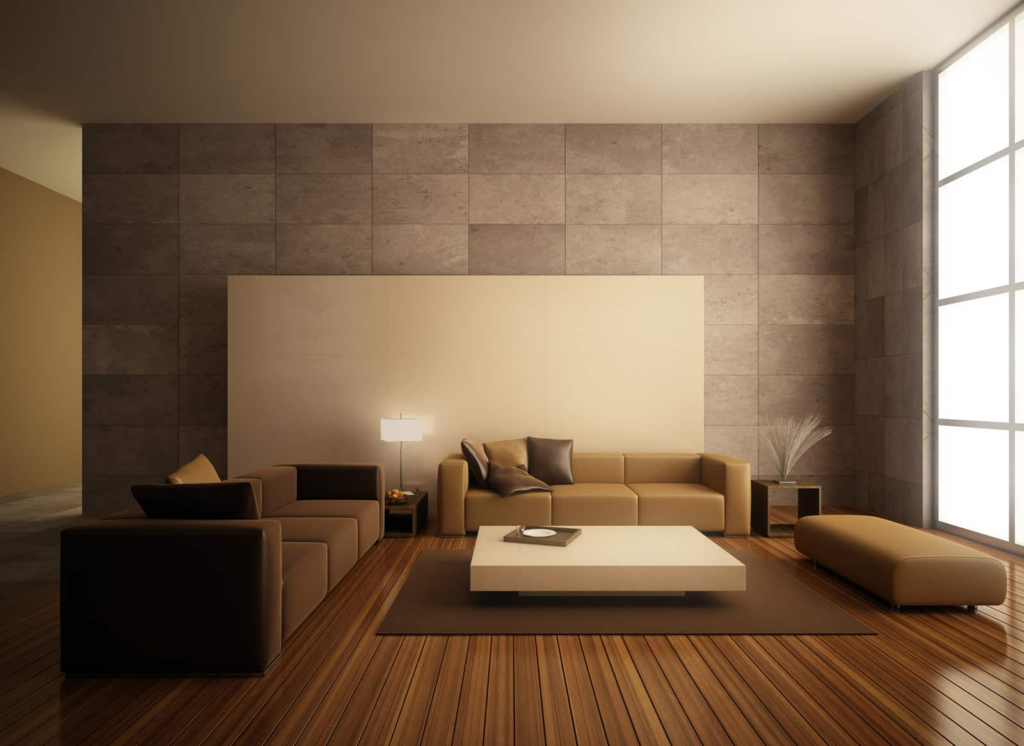
Minimalism reflected a broader cultural shift towards simplicity and mindfulness. Amid the growing chaos and clutter of modern life, people sought environments that offered peace and clarity. Minimalism’s emphasized decluttering and focusing on essentials. This resonated with those looking to create a sense of order and tranquility in their homes.
The minimalist movement also responded to the economic uncertainties of the early 2000s. With the dot-com bust and the 2008 financial crisis, there was a growing awareness of the need for financial sustainability. Minimalist design placed focus on quality over quantity and timeless aesthetics. It promotes a more thoughtful and sustainable approach to consumption and living.
Essential Elements of Maximalist Designs
There are a few staples of the aesthetic that you can find in nearly every maximalist home:
Colors
Maximalist design thrives on the use of bold, vibrant colors. Rich jewel tones, contrasting hues, and saturated shades dominate this aesthetic. They create a lively and dynamic environment. The psychology of color plays a crucial role, as different shades evoke various emotions and set the tone for a space.
Patterns and Textures
Patterns and textures are central to maximalist design. Mixing florals, geometrics, and abstract patterns adds depth and visual interest. Textures like velvet, silk, and layered fabrics contribute to the richness of the space. Eclectic combinations encourage a sense of whimsy and individuality.
Furniture and Accessories
Maximalism emphasizes unique, statement furniture pieces and accessories. Vintage finds, curated collections, and bespoke items create a personalized look. Furniture often features intricate details, bold shapes, and a mix of modern and antique elements. They reflect the eclectic nature of maximalist design.
Art and Decor

Art and decor are focal points in maximalist interiors. Walls adorned with diverse art collections, both contemporary and classic, add character and tell a story. Decorative items such as sculptures, vases, and ornamental objects enhance the richness of the space. They blend different styles and eras.
The Resurgence of Maximalist Design
The return of maximailsm is not just an aesthetic choice. It is a direct response to the ever-changing social, and economic state of the world.
Anti-Capitalism Sentiment and Embracing Individuality
The recent rise in anti-capitalism sentiment has also played a significant role in the revival of maximalism. Many people have begun to reject the sterile environments associated with starups and tech companies. These spaces are designed for efficiency and productivity. However, they are now seen as symbols of a profit-driven culture that values conformity over individuality.
Maximalism offers an antidote to this corporate aesthetic. People are embracing bold, unique, and personal design elements. This allows them to reclaim their spaces as expressions of their identities rather than as mere reflections of work culture. Maximalism represents a broader societal movement towards valuing personal expression, creativity, and diversity. It works in contrast to the homogeneity often promoted by capitalist ideals.
Cultural and Social Drivers
The maximalist movement is characterized by bold colors, eclectic patterns, and rich textures. It arises from a desire for greater self-expression and individuality. In an era dominated by social media, visual impact is paramount. Maximalism provides a canvas for personal stories and unique tastes. The rise of platforms like Instagram and Pinterest has fueled this trend. These platforms encourage people to showcase their distinctive styles.
Maximalism is a reaction against the perceived sterility and uniformity of minimalism. After years of restrained aesthetics, many seek to infuse their spaces with warmth, personality, and a sense of abundance. It embraces the beauty of diversity, blending different influences, cultures, and periods.
Politically, the celebration of diversity and inclusion influences maximalist design. In contrast to minimalism’s homogenizing tendencies, maximalism celebrates individual and cultural uniqueness. This inclusive approach resonates in a world increasingly focused on representation. It allows people to celebrate different voices and experiences.
Psychological Implications
Psychologically, maximalism satisfies a human need for novelty and stimulation. Rich, layered environments engage the senses and provide constant visual interest. This stands in stark contrast to minimalism’s serene but sometimes monotonous aesthetic. Maximalism’s vibrant, dynamic nature can evoke joy and stimulate creativity. It makes your spaces feel more alive and inspiring.
Technological Influence
Technology has also impacted the resurgence of maximalist design. Advanced printing and manufacturing techniques allow for intricate patterns and textures. These designs may have been previously difficult to produce. Digital tools enable designers to experiment with and perfect complex designs. It makes maximalist aesthetics more accessible and appealing.
Embracing 80s and 90s Nostalgia in Maximalist Design
Today, there is a widespread trend of nostalgia for the 1980s and 1990s, influencing design choices in significant ways. Many people are drawn to these decades because they represent their formative years. 80s and 90s nostalgia evokes fond memories of a vibrant, maximalist aesthetic.
Cultural Influence and Design Borrowing
Nostalgia for the 80s and 90s is evident across various aspects of popular culture. You can see the influence everwhere. Bold patterns and oversized clothing makes a comeback in fashion. 90s pop is being perdormed on stages globally. And the influence extends to interior design, where maximalist principles are being embraced. People are trying to recreate the energetic and expressive styles of the past.
Maximalist Design as a Vehicle for Nostalgia
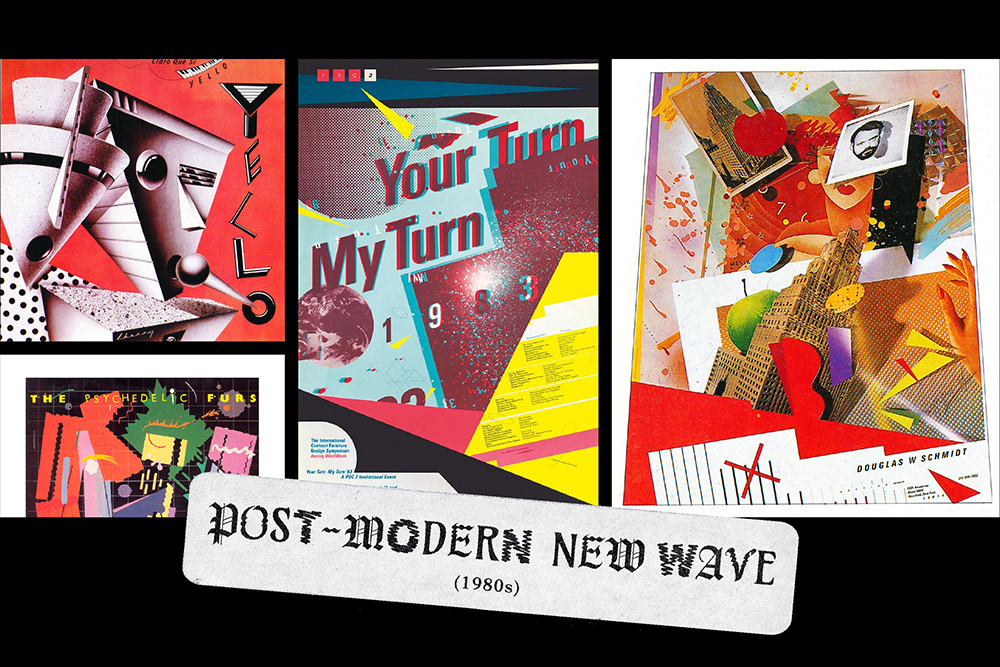
Maximalist interiors today often feature elements borrowed from the 80s and 90s. This includes vibrant color schemes, mix-and-match patterns, and an eclectic blend of furniture and decor. By incorporating these nostalgic elements, people create spaces that reflect their personal histories.
Emotional Connection and Personal Expression
For many, recreating the maximalist style of the 80s and 90s isn’t just about aesthetics. It is about reconnecting with a time of youthfulness and cultural vibrancy. These design choices allow individuals to express their unique tastes and personalities. It turns their homes into personalized havens that celebrate individuality and creativity.
The Pandemic’s Influence on Maximalist Design
The pandemic led people to spend more time at home, influencing a shift towards maximalist design preferences.
Increased Home Time
Lockdowns and remote work made homes serve multiple roles, from offices to gyms, driving a desire for dynamic and inspiring environments.
Seeking Comfort and Expression
Maximalism became popular for creating cozy, personalized spaces that felt lively and stimulating, breaking the monotony of prolonged indoor living.
Embracing Personalized Style
With more time indoors, people experimented with bold colors, varied textures, and eclectic decor to express their personalities and interests.
Change in Priorities
There was a shift from minimalist simplicity to focusing on homes that promoted emotional well-being, creativity, and comfort.
The Future of Maximalist Design
The future of this design choice will depend on a host of factors, fom socioeconomic to political. What we kow for sure is that the cyclical nature of trends will continue on.
Expansion Beyond Home Interiors
Maximalist design is poised to extend its influence beyond home interiors. You can expect to see the impact on various fields such as fashion, graphic design, and architecture. In fashion, we already see a growing embrace of bold patterns, vibrant colors, and eclectic styles. Designers are increasingly drawing inspiration from maximalist principles. They are creating clothing that makes a statement and celebrates individuality.
Graphic design is also experiencing a shift towards maximalism. The clean, minimalist designs that dominated digital spaces are giving way to more intricate, detailed, and colorful aesthetics. This trend reflects a desire for visual richness and a break from the monotony of minimalist design. You can expect to see a revrsal of the minimalist logos that many companies adopted in the last decade. More intricate and retro designs evoke nostalgia in consumers. This makes digital experiences more engaging and dynamic.
In architecture, maximalism is manifesting in the form of buildings with elaborate facades. Diverse materials and intricate details make the architecture unique. Public spaces, such as hotels, restaurants, and retail environments, are adopting maximalist aesthetics. It creates unique and immersive experiences for visitors. This approach attracts attention and provides a memorable and visually stimulating environment.
Influence on Public Spaces
Public spaces are increasingly incorporating maximalist elements. These spaces create visually rich and engaging environments. This trend is evident in the design of hotels, restaurants, and retail stores. Bold colors, diverse patterns, and eclectic decor elements are on display. This makes a strong impression and enhance the overall experience for visitors. These spaces aim to provide a sense of being lived-in. It makes them more attractive, comfortable, and memorable.
Integration with Technology
The future of maximalist design will likely see further integration with technology. Advanced manufacturing techniques will lead to the creation of new patterns, textures, and designs. Digital tools will allow designers to experiment with and perfect complex aesthetics.
The Long-Term Outlook: The Pendulum Swing Back to Minimalism
While maximalism is currently on the rise, design trends are inherently cyclical. As maximalism reaches its peak, we can anticipate a future swing back to minimalism. There may be the emergence of a new hybrid style that balances both approaches. This shift will be driven by changing societal needs, economic conditions, and cultural influences.
Factors such as economic downturns, a renewed focus on sustainability, and a desire for simplicity may prompt a return to minimalist principles. This future iteration of minimalism may integrate lessons learned from maximalism. It results in a style that combines the best of both worlds—simplicity with touches of boldness and individuality.
Bold colors, eclectic patterns, and rich textures add personal expression and cultural celebration to our homes. Looking forward, design trends will continue to evolve, mirroring the complex and ever-changing landscape of our world.
Have a great idea? Let EvolveDash bring it to life! We specialize in empowering businesses with innovative digital solutions. We create custom mobile apps and build user-friendly websites, providing tailored solutions to meet your needs.
We’ve worked with over 100 satisfied clients and completed around 450 successful projects. We possess the expertise and experience to take your business to the next level. Contact us today to discover how we can help!
FAQs
How do I incorporate maximalist design into a small space?
Maximalist design can still work well in small spaces by using bold colors, vibrant patterns, and carefully chosen statement pieces. Opt for multi-functional furniture and try to combine different textures to create visual interest without overcrowding the room. Layering different design elements thoughtfully can make the space feel dynamic yet still manageable.
Is maximalist design more expensive than minimalist design?
Maximalist design can sometimes be more expensive due to the need for unique, high-quality furniture and decor items. However, it’s also possible to adopt a budget-friendly approach by mixing affordable pieces with high-end items, sourcing vintage finds, and embracing DIY projects. It’s more about creativity and personal expression than the overall cost.
Can maximalist design be sustainable?
Yes, maximalist design can align with sustainable practices. By focusing on quality over quantity and investing in timeless, durable items, you can create a space that minimizes waste. Incorporating second-hand or upcycled furniture, as well as mixing new items with antiques, can also reduce environmental impact while still embracing maximalist aesthetics.
